Adel Bashqawi, himself of Circassian descent has written a seminal book on Circassia entitled:
“Circassia: Born to Be Free”
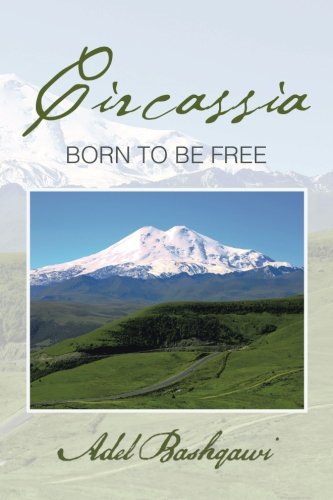
This book is available for order from Xlibris, Amazon, Barnes & Noble, and Booktopia/Australia. The book is already receiving positive attention from readers in Amazon: “One of the few pieces of literature on the Circassians’ history that does not stray from the Truth. Well researched and steeped in passion, Adel Bashqawi’s “Circassia, Born To Be Free” is a must read for anyone interested in the Circassians.”
This book provides the history of Circassia, a small European nation in the northwestern Caucasus. It explains the Tsarist Russian invasion of this nation and the ensuing genocide which forced a mass migration. As a result of this history, most Circassians today live in the diaspora. Adel Bashqawi, himself a descendant of Circassian immigrants forcibly deported from their homeland into the Ottoman Empire, felt obligated to highlight an virtually forgotten period in the history of the Circassian nation.
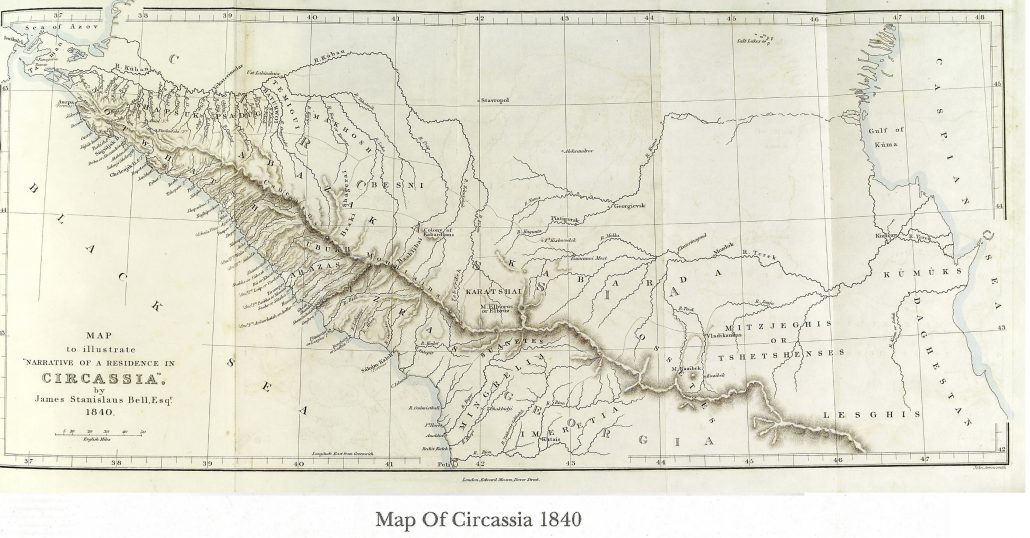
Map of Circassia as drafted by James Stanislaus Bell in 1840 (Source: Adel Bashqawi “Circassia: Born to be Free”).
This book will attract the interest of readers wanting to be informed about the many challenges facing the Circassian issue. This book elaborates on a variety of affairs of concern to Circassians and non-Circassians alike, notably those of academic interest and human rights issues.
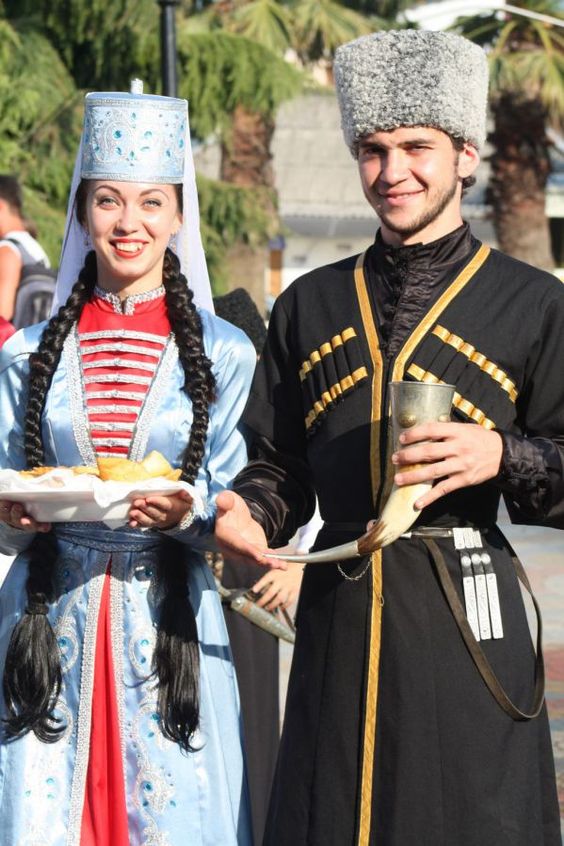
Circassians in traditional Kabardino attire (Source: Pinterest).
The Circassian tragedy is analyzed in detail by Bashqawi. While this has received little attention in Western historiography, up to 90 percent of Circassians are reported by Bashqawi as having been deported from their homeland. They are today scattered in scores of countries around the world, with the rest dispersed in their motherland, living in several Russian administrative enclaves. Today, the integral elements of the entire Circassian nation are at stake, not just in territorial terms, but their language and culture.

A Circassian man dressed in ancient Scythian warrior attire (Source: Topsy.one). The Scythians were an Iranian-speaking people closely kin to the Persians, Medes, etc. of ancient Iran. The territory of Circassia in antiquity was part of greater ancient Scythia in Eastern Europe.
The book describes how a nation has struggled to defend its very existence, identity, freedom and the very future of its generations who have endured a tremendous amount over the decades as a result of the already cited the Tsarist invasion. The Circassians have had to adapt to the conditions imposed by their displacement into the lands of diaspora, concomitant with a constant struggle against alienation.
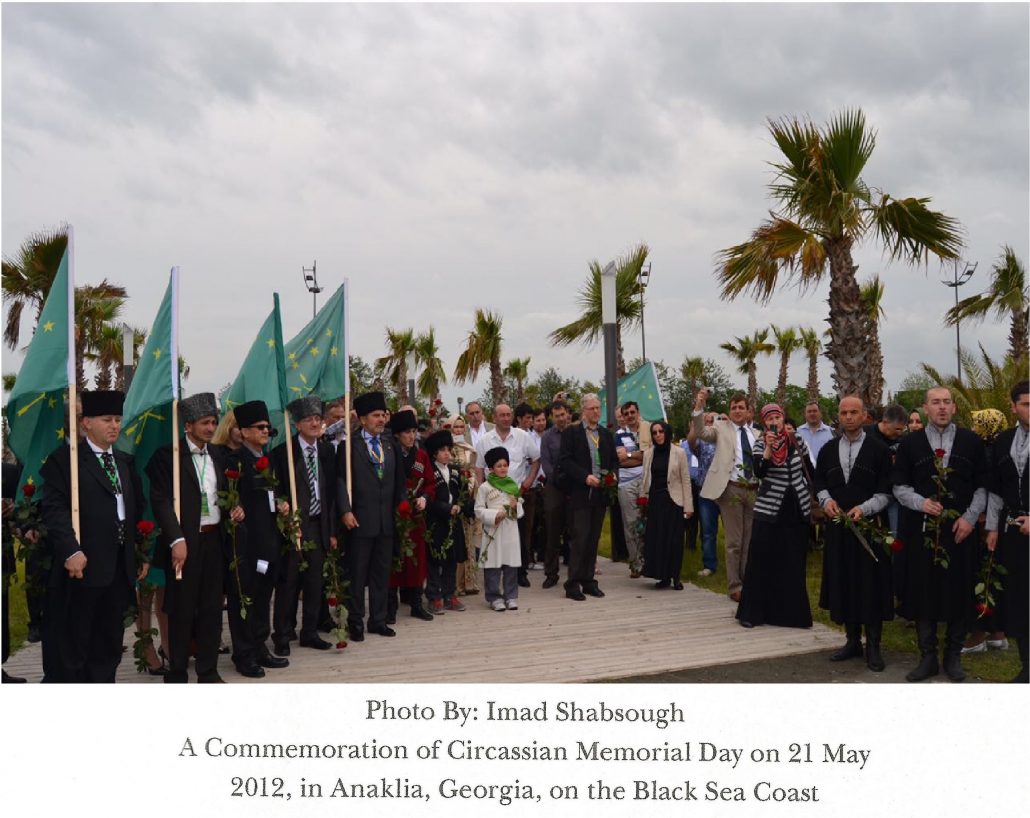
A distinguishing feature of this book is that it deals with the issue of the Circassian identity and proposes possible legal methods with which the Circassians can utilize in order to re-attain their cultural rights. This book also examines political issues not discussed in several books discussing Circassia and Circassians. By linking the past to the present, Bashqawi arrives at a vision for the future. he also cogently argues that simply ignoring the issues is no longer an adaptive option. It is also argued that optimism and solidarity are required to preserve the culture, heritage, language, and the entire nation of the Circassians.
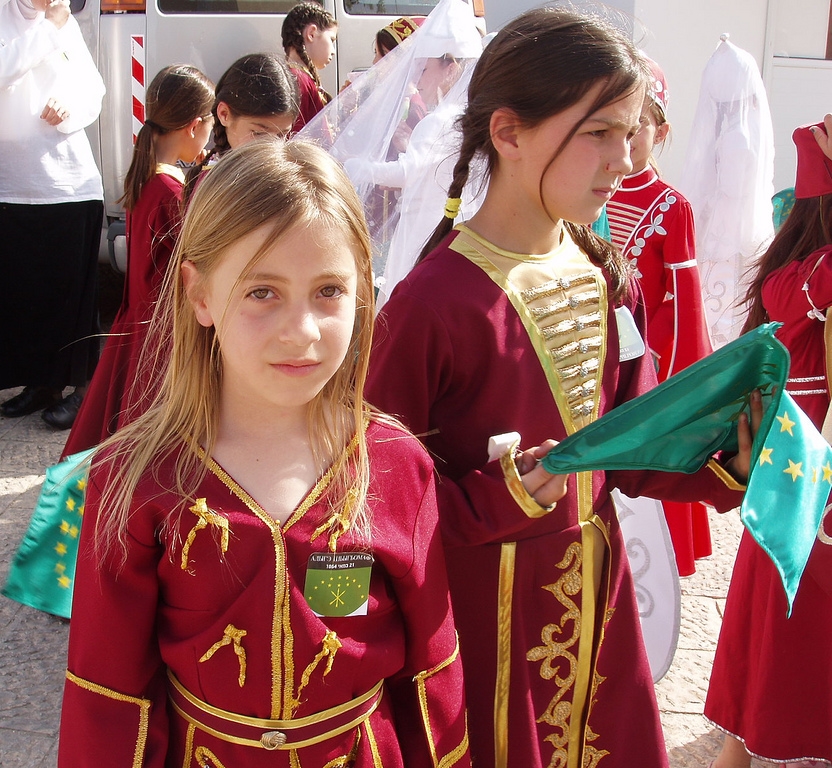
Circassian girls in the Northern Caucasus (Source: Pinterest).
The book demonstrates how the Circassians have the potential of linking and uniting over the internet. The use of traditional print media, modern and advanced communications, and social media have provided solid foundations for helping the Circassians connect across the globe. Thus far, the internet has aided with the following: teaching the Circassian Adigha language, preserving culture, acquiring eBooks, addressing children’s concerns, establishing communications, connecting activists, disseminating information about the Circassian issue, learning Circassian history, sharing petitions, finding research centers, reaching libraries, accessing archives, bookstores, and other important matters.
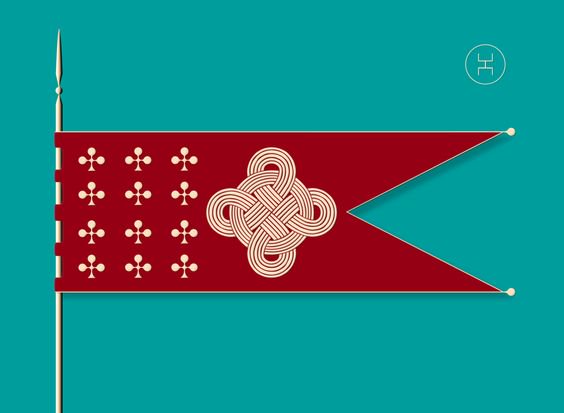
A traditional Circassian flag featuring twelve club symbols which represent twelve of Circassia’s provinces, alongside a Circassian unity symbol (Source: Topsy.one).



